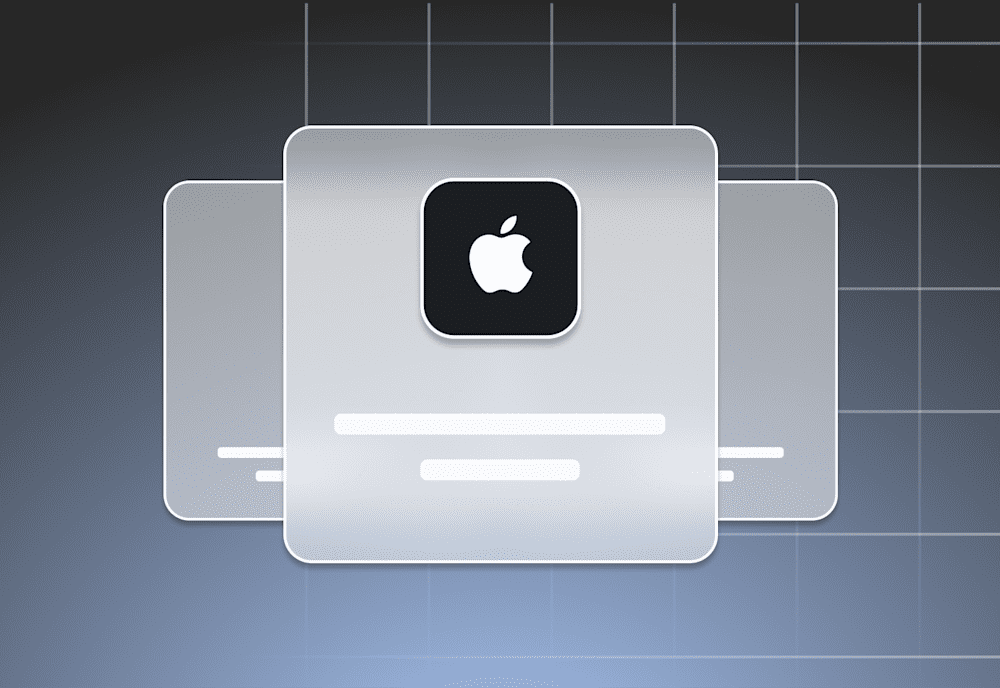Hiring an IT team is a make-or-break situation. If you hire the right team, your business gets the support it needs to be productive and profitable. If you hire the wrong team, you may be in for reduced employee engagement, higher costs, and a lot of headaches. After all, employing the best IT professionals is essential for maintaining operations, improving systems, enabling better processes, and implementing new technology.
Luckily, hiring skilled IT staff doesn’t need to be overly complicated if you know what you’re doing. We’ll walk you through what to consider during the hiring process to find qualified tech talent, from job descriptions and skill sets to resumes and interviews.
Setting requirements in the job description
Certain attributes are valuable for IT candidates, but that doesn’t mean every job candidate needs every trait and skill. You’re unlikely to find an ideal candidate. Regardless of someone’s background, they’ll probably experience a learning curve in their new position. The trick is finding a new team member who can grow into a good fit for the role.
Before recruiting employees, consider the following factors to choose relevant qualifications for the job posting.
What is necessary to succeed in the role
Different IT roles require very different skills. Expecting a potential candidate to be an expert in all IT-related fields dooms you to failure. Instead, focus on the bare minimum qualifications necessary to excel in the role. Avoid mentioning unnecessary “requirements” in the job description.
For instance, requiring a college degree may stop those with plenty of on-the-job experience from applying. Additionally, women often only apply for positions if they meet 100% of the qualifications, whereas men apply if they meet 60%.
While setting extensive qualifications might seem like an easy way to get the best candidates, you may instead be reinforcing the tech gender gap and excluding qualified candidates who have experienced educational inequalities.
How to limit bias
Bias in your hiring process can lead to a homogenous workforce, which may hamper your productivity and innovation. Unfortunately, a lot of bias is unconscious, so the hiring manager may favor certain candidates unintentionally. While reducing bias is a complex and ongoing process, these steps can point you in the right direction:
Try to recognize your biases: Understanding your own underlying assumptions and preferences can help prevent them from interfering with your hiring process.
Avoid biased language in job postings: Biased language in job descriptions can discourage qualified candidates from applying. Use gender-neutral pronouns and avoid language with racial, ableist, or other exclusionary undertones.
Do not look for a cultural fit: A new employee can add to the company culture without matching it. In many cases, the “culture fit” concept excludes candidates with backgrounds different from your existing staff. Instead, aim for a culture add.
How to balance hard and soft skills
When hiring for technical positions, it may be tempting to focus squarely on hard skills. However, soft skills can be just as important. While hard skills are the nitty-gritty technical competencies, soft skills are the nontechnical traits, attributes, and abilities critical to success, like communication, time management, and problem-solving. Selecting a combination of hard and soft skills for your job listing can allow you to narrow in on a well-rounded candidate.
Top 12 qualifications for your IT team
Necessary qualifications vary between roles, but virtually every IT position requires at least some of the following skills.
1. Technical skills
Technical skills are the classic “hard skills” necessary to maintain your systems, fix problems, and optimize performance.
Coding and scripting
A qualified candidate may need to know common programming languages, like Python, Java, JavaScript, Node.js, PHP, HTML, C++, Bash, and Ruby. Code writing is valuable for positions related to quality assurance, app development, architecture, cloud computing, web development, automation, and more.
UX design
For IT staff working on user-facing products, UX skills can be invaluable. Information architecture, wireframing, prototyping, user testing, and visual communication skills may come in handy.
Networking
Many tech roles call for someone who can set up network hardware, plan network design, oversee network security, and troubleshoot problems.
Enterprise architecture
Robust skills in architecture management, frameworks, implementation, and documentation can help a future employee arrange an infrastructure that supports business goals.
Cloud computing
With more and more businesses relying on cloud-based solutions, companies frequently need IT candidates who are knowledgeable about cloud migration and workflows. Depending on your preferred cloud platform, you might also look for certifications from Amazon Web Services, Google Cloud, or Microsoft Azure.
Security
With cyberattacks on the rise, and yes, even for Macs, security is paramount. Every IT professional should possess at least some security expertise. Related technical skills may include cybersecurity frameworks, intrusion detection, security controls, risk analysis, and incident response. Prospective employees should also be familiar with common threats and regulatory guidelines.
Data and database management
Data helps businesses predict trends, make informed decisions, reduce expenses, and grow. While data management and database management are separate skills, both may be necessary in IT teams.
Data management entails using the data. Relevant skills include data analysis, mining, and visualization. On the other hand, database management involves overseeing where that data is held. Related skills include querying data, writing SQL statements, data warehousing, using database technologies, and troubleshooting hardware and software problems.
SQL, NoSQL, and Apache Hadoop skills frequently come in handy for data-related roles.
2. Organization
IT professionals juggle a lot of competing priorities, so organizational skills are essential. These include time management, project management, multitasking, estimating timeframes, scheduling, and planning.
3. Budgeting
With limited financial resources, IT leaders may have to prioritize staffing, hardware, and software needs. Anyone on track to a leadership role in the department should be able to estimate expenses, analyze financial health, forecast expenses, allocate funds, and calculate ROIs to justify IT expenditures.
4. Flexibility
Departmental goals shift. Business needs change. Computers break. These situations call for adaptable IT staff who can effectively deal with sudden changes. Resilience and an ability to think on their feet are beneficial, as is a willingness to work outside of the normal 9 to 5. You never know when your business will need a speedy fix during off-hours to avoid business interruptions.
5. Customer service
While some may picture your IT staff as huddling together in a room full of hardware and half-full coffee mugs, an effective team needs extensive customer service skills. Not only do employees need to be prepared to field calls and emails from other teams, but they may also need to leave the confines of the IT department to help users set up devices, troubleshoot problems, or plug in their computers (why is this so hard?). Empathy, patience, attentiveness, a thick skin, and other customer service skills can make user interactions as painless as possible.
6. Leadership
Any IT team member may need to lead a project if their unique technical skill set is critical to the initiative. Knowing a new employee has core leadership skills, like delegation, goal setting, and relationship building, ensures you have someone who can step up when needed.
7. Teamwork
IT employees have a reputation for working alone. While this may be true of some positions, many require extensive teamwork. Collaboration, conflict management, honesty, responsibility, reliability, and other teamwork-related aptitudes can make it easier for new staff members to work within your IT team and with other departments.
8. Communication
Well-rounded writing, speaking, and listening skills can improve teamwork, leadership, and performance in general. Writing ability supports process documentation and reporting. Speaking skills can support collaboration and vendor negotiation. Meanwhile, listening skills are critical for any role that entails helping users or executing leadership’s vision.
9. Creativity
When something goes wrong, the cause may not always be apparent. That’s where creativity comes in. IT professionals should have skills in problem solving, critical thinking, and analysis to figure out what’s wrong and implement appropriate solutions.
10. Determination
Unfortunately, most IT professionals experience more than their share of setbacks and unexpected changes. Unwavering determination can allow them to pivot as needed.
11. Curiosity
Technology is constantly changing, so anyone in IT must be curious in order to keep up. Being eager to learn and truly interested in the latest developments helps candidates to stay current, thereby allowing your business to implement the latest innovations.
12. Alignment with company values
While looking for a “culture fit” can hinder diversity, that doesn’t mean your candidate shouldn’t uphold your company values. Hiring an IT staff that prioritizes the same core values as the company itself can promote cross-departmental harmony. For instance, if your company values continuous learning and innovation, an IT employee who is content to do things the same way for the duration of their career isn’t the best choice.
What to look for on IT resumes
If you’re lucky enough to get plenty of candidates for an open position, deciding who to interview can be difficult. Keep an eye out for these red and green flags on resumes to filter through your options:
What to watch for in IT interviews
Interviews can be tricky for both the interviewee and the interviewer. Even if you know exactly what you want in a candidate, figuring out how to get the information you need isn’t always easy. Unfortunately, even great candidates may not shine if you don’t ask the right questions. Carefully select each job interview question to target the specific skills and traits necessary for the role. Try to limit subjectivity by standardizing the process and avoiding biased questions.
Once you’ve asked the question, watch for the following information in your candidate’s responses to get a more well-rounded overview of them:
Knowledge, skills, and experience: These are the most obvious factors to consider. After all, you list qualifications in your job posting for a reason.
Examples of success: Understanding a candidate’s previous successes can show how they approach situations. Examples can also provide concrete evidence to illustrate their skills.
Communication: Interviews involve both listening and speaking. Rather than asking questions to try to assess their potential communication skills, pay attention to what you see in the interview itself.
Career goals: Does this position align with the candidate’s goals? If not, you might end up looking for a replacement sooner than you’d like. Additionally, if the candidate can’t express any goals, it may hint that they won’t be particularly goal driven should they get the position.
Self-awareness: While interviews are an opportunity for candidates to highlight their value to the company, IT candidates should also grasp their own weaknesses. Selecting an employee who understands what they bring to the table can lead to a more harmonious team environment.
Preparation: Researching the company and position ahead of time shows that the interviewee is interested in the job. Prepared IT candidates should come to the interview ready to answer your questions and ask some of their own. “What does this company do again?” should not be one of those questions.
Enthusiasm: A candidate’s attitude in the interview may be similar to their attitude if they get the position. If your interviewee seems disinterested right off the bat, they’re unlikely to be a dynamic member of your IT team.
Once you focus on the most important factors, finding the right person for the job gets much easier. Forming a great team is worth putting in a little extra effort upfront.
Whether you have a small business with just one IT employee or a large enterprise with hundreds of professionals, SimpleMDM can empower your team to do its best work by making Apple device management easy. Check out a free 30-day trial of SimpleMDM, or learn more from the SimpleMDM blog.


